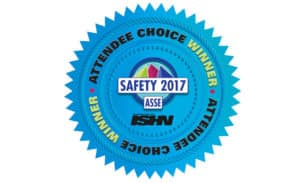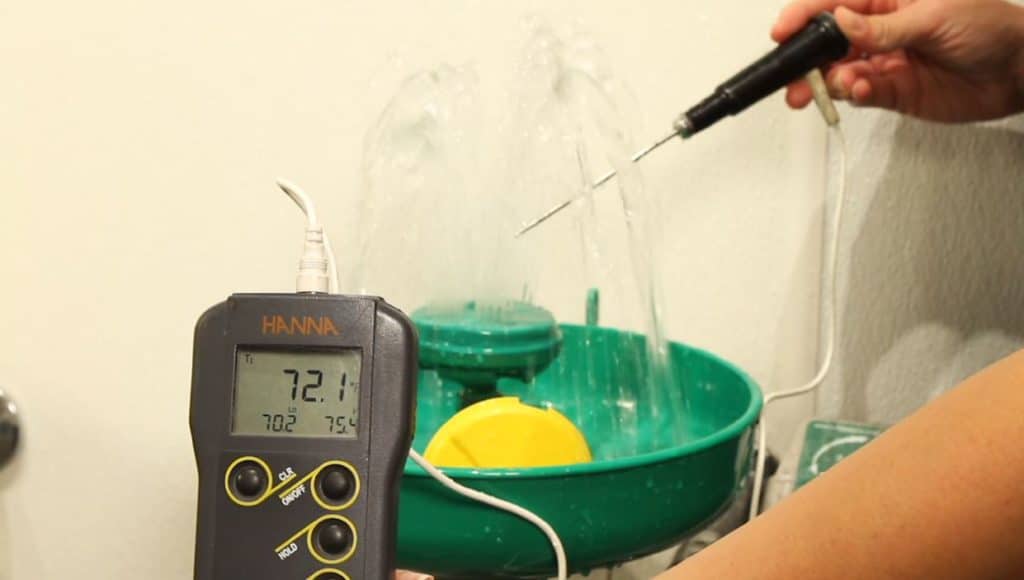[via OH&S Magazine May 2018 Issue]
Creating a “Comfort Zone” for Emergency Equipment Water Temperature
By: Samantha Hoch, Product Marketing Specialist at Haws®
Tempered water has been a hot topic of late, but just as many installations need cooling of high-temperature supply water.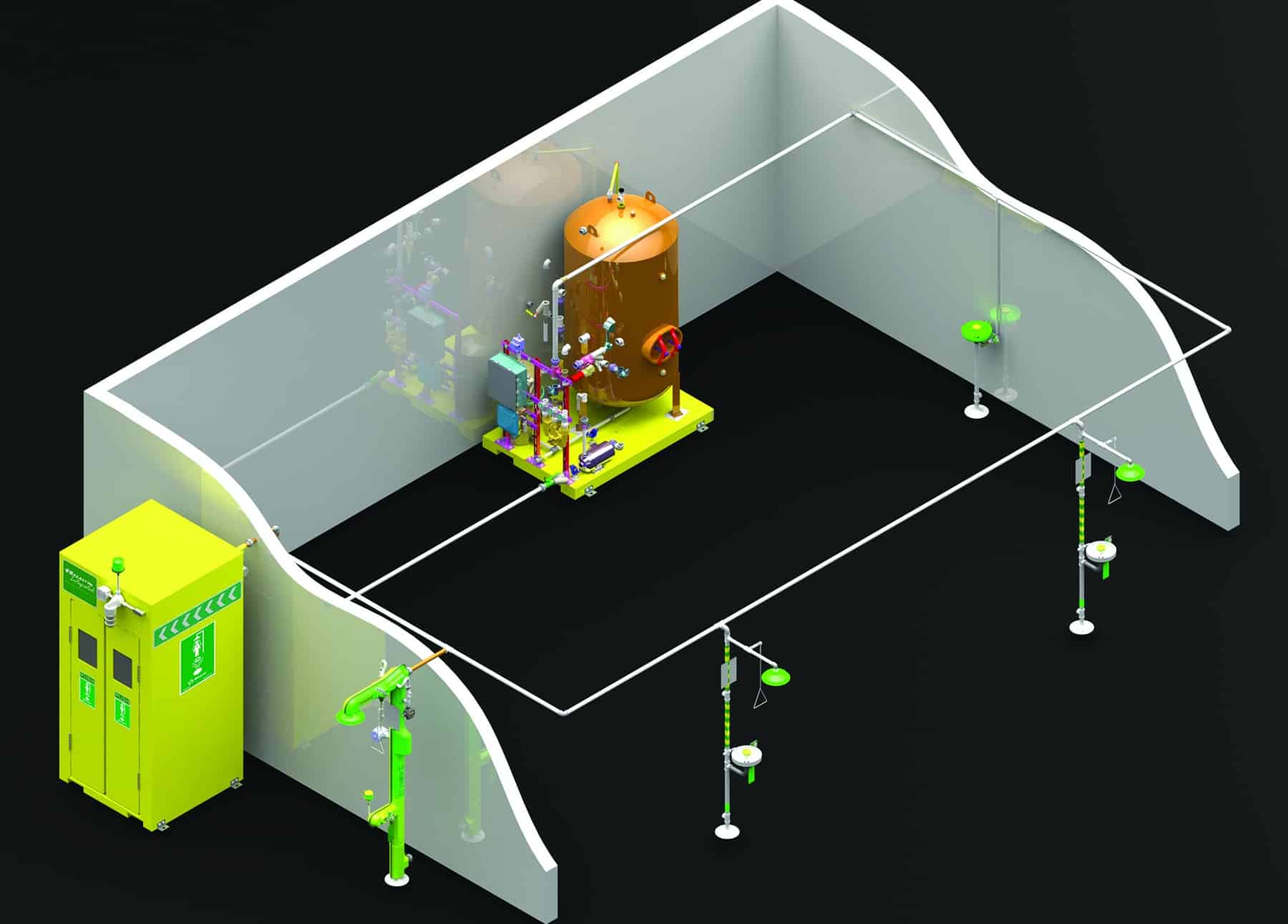
Moving water transfers heat, either increasing the temperatures of the objects it contacts or decreasing them. Heat transfer, via moving water, made twentieth century man more productive and more comfortable. It sped up transportation and made a wealth of innovative products possible. But, while the physical properties of heat transfer via water movement can certainly be beneficial, there are many instances when temperatures must be controlled within a high and low range to avoid injury. For many years, industrial emergency equipment was not one of those instances. The water that flowed through emergency showers and eyewashes were subject to climatic, source affected and other ambient variables that could raise it to injurious temperatures or lower it to downright freezing temperatures.
Municipally supplied water, when running for a sustained period, tends to cool down or even heat up, eventually approaching its source point temperature. And, by the same token, water subjected to hot or cold ambient temperatures in manufacturing plants or elsewhere can become dangerously hot or cold. Presently, OSHA – 29CFR 1910.151(c) – requires the availability of suitable first aid treatment facilities. Specific direction is given indicating that “suitable facilities for quick drenching or flushing of the eyes and body shall be provided”.
While the definition of “suitable” was mostly left up to the specifier in the past, the current ANSI/ISEA Z358.1-2014 Standard provides much greater clarity. ANSI mandates a water delivery temperature range defined as “tepid”. This is clarified as a 40-degree temperature range for flushing fluids spanning from 60°F to 100°F [16°C to 38°C]. Yet, no source information proves that 60°F for 15 minutes in potentially freezing outdoor conditions will not lead to hypothermia. Nor is there supporting documentation to verify that 100°F would not scald or further injure the delicate eye tissues or skin.
The thought of an injured worker short-cutting the required emergency equipment use cycle because the water is too cold or hot has led to the notion of the “Comfort Zone”- a revised outlet water temperature range that assures comfortable, non-injurious use for the full 15-minute use cycle.
Revisions to the ANSI/ISEA Z358.1 Standard have occurred on a somewhat routine basis. Published in 1981, the standard was updated in 1990, 1998, 2004, 2009 and most recently in 2014 with the expectation of another update on the horizon. It is suggested that a revised water temperature range between 70°F and 95°F can help ensure medically effective results and provide that best practice comfort zone. Increasing the minimum flushing fluid temperature to 70°F can encourage users to use the equipment for the full fifteen-minute flush cycle, protect against cold shock that could lead to cardiac arrest, and advocate for the removal of contaminated clothing. Decreasing the maximum temperature to 95° F will help avoid temperatures known to harbor specific bacteria growth, prevent scalding of the eyes and skin, and reduce the chances of an increased chemical reaction.

So, how do you ensure a facility’s equipment falls within the comfort zone? For the sake of this discussion, we will assume that the plant has sufficient emergency equipment in the appropriate locations and that the comfort zone approach is being added to the existing emergency equipment assets.
Let’s consider the most appropriate steps to be taken:
- Ascertain your actual inlet water temperature range and compare it to the desired range – This involves checking the initial and sustained temperature readings at the various emergency equipment sites located throughout the facility. Since conditions can change from location to location, the chore of checking each shower and eyewash is the safest bet. Don’t forget the impact of seasonality on water temperatures. It may be necessary to check at several times during the year.
- Determine the overall changes needed – If initial temperatures are either too hot or too cold, while sustained temperatures are within the ANSI mandated temperature range or even the recommended comfort zone, consideration of a re-circulation system is appropriate.
If sustained use temperatures fall outside of the temperature parameters, you may require warming technologies, cooling technologies or in certain areas and circumstances, both. In most instances, these types of systems can be sized to handle multiple showers/eyewashes each. Specific applications should take into account the volume of shower and eyewash locations to be included in each loop, the maximum distance between components and the impact of exposure of warmed or cooled pipes to ambient air temperatures. It is highly recommended that specifiers work with eyewash and shower manufacturers directly to determine the appropriate system, given your specific geographic location, processes, temperatures, and layout/equipment locations.
It should also be noted that while tempered water – meaning warming cold water – has been a hot topic of late, just as many installations need cooling of high temperature supply water. Elevated temperatures can come from several sources, including high ambient temperatures, exposure to process heat or excessively high supply temperatures.
- Identify the number, required location(s) and sizing of the thermostatic mixing valve(s) – This applies only to tempering water or warming sustained use cold input water prior to emergency equipment use.
The brain of a warming system is its thermostatic mixing valve. This device ensures that the safety equipment safely receives water at the required temperature. A good thermostatic mixing valve is actually a system of valves, typically designed by safety equipment manufacturers since they understand their equipment and their specific flow rate requirements. Specifiers are cautioned to do their homework well with respect to selection of the proper valves for your specific needs.
- Determine your hot and/or cold water source – In sizing the tempered water system for any particular application, providing a source for sufficient quantities of water is essential. Recent advancements in instantaneous hot water heaters have made these products practical for use in emergency equipment applications, especially where space for traditional hot water heaters and hot water storage tanks is limited.
- Consider the maximum simultaneous usage – Always work to the maximum use, worst-case volumes. Booster and/or re-circulation pumps, as well as storage tanks, may be necessary to assure the availability of the maximum demand volume of tempered water. A variety of products are available to fill these needs.
The science of emergency equipment design and specification continues to advance rapidly and the clear winners are the specifiers that stay “on top” of the advancements and the employees who are protected by them. Establishing and maintaining a best practice comfort zone for water temperature delivery provides everyone the maximum peace-of-mind.
Haws Receives Safety 2017 Attendee Choice Award
ISHN’s annual hands-on safety and health products and services awards – a complement to the Reader’s Choice Awards — are based on voting by attendees at the American Safety of Safety Engineers (ASSE) annual professional development conference.
Haws is proud to announce that our Tempered, Gravity-Fed, Portable Eyewash model 7501T is a winner in the category of Emergency Eyewashes at this year ASSE Safety 2017 conference Attendees Choice Award.
Model 7501T is a compact portable tempered eyewash and is ideal for remote locations. The 9-gallon (34 L), gravity-fed, eyewash uses a heated, insulated blanket to provide ANSI compliant tempered potable water in operating temperatures between -30° F (-34° C) and 100° F (38° C) for locations without access to a continuous potable water source. The self-contained heating blanket electrical system uses NEMA 3R rated components. 120V electrical requirement with supplied 8′ power cord.
- Featuring an FDA approved high-density green polyethylene tank easily activated by pulling the yellow activation arm down to the open position
- A wide-fill opening with threaded cap permits easy inspection, cleaning, and filling
- Relocation is simple due to the easily mounted bracket (included) and light design of this 9-gallon (34 L) portable
To see a complete line of Portable Eyewash solutions visit our website.
Are you providing tepid water to your emergency equipment?
Per the ANSI Standard, all eyewashes, eye/face washes and combination units MUST deliver tepid flushing fluid between 60°F and 100°F (16°C-38°C). Are you providing tepid water in your facility?
Webinar Invitation:
Well-Tempered: Your Complete Guide to Tempered Water
PRESENTER: Billy Wing, Haws Integrated™ Senior Project Engineer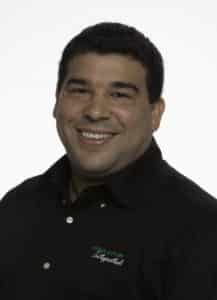
DATE: Thursday, December 17th
TIME: 10am-11am PT/1pm-2pm ET
Take advantage now by registering.
The American National Standards Institute (ANSI) introduced tepid water as an emergency wash requirement in 1998 and updated the required water temperature range in the 2009 ANSI standard update. Today, many emergency eye/face wash and shower units across North America do not yet comply with these significant provisions.
In this FREE webinar, we’ll provide insight into what tepid water is, ANSI requirements for tepid water, and tepid water solutions.
This is a great opportunity to see how Haws Integrated™ can help you maintain ANSI compliance and provide proper tepid water to you facility. Our staff will be on hand to answer your questions during the live Q&A.
REGISTER NOW
About Haws Integrated™
Haws Integrated™ designs, builds, and manages custom-engineered industrial safety systems that provide tempered water when and where it is needed.
FAQ: Tepid Water for Emergency Showers & EyewashesBelow are some frequently asked questions regarding the ANSI Z358.1-2014 requirement of providing tepid water for emergency showers & eyewashes. Tepid water is defined as flushing fluid between 60°F- 100°F (16°C- 38°C).
If the area is typically 70°F (21°C), is the use of a 300 gallon storage tank an acceptable means of providing tepid water for emergency showers & eyewashes?
Yes and no. Theoretically you could fill a tank without an immersion heater and allow it to reach equilibrium with the ambient environment (70°F [21°C]), and provide tepid water. The issue is that you will need more water than 300 gallons to provide 15 minutes of tepid water because you will have to account for the shower (20 gpm) and eyewash (1 gpm) or eye/face wash (3-5 gpm depending on manufacturer). Based on these, you will require as a minimum 315 gal at a minimum assuming 100% usage for a shower/eyewash or 345 gal minimum assuming 100% for a shower and eye/face wash combination. If this is a self-contained unit, you could do this but would have to add a bacteriostatic solution, have at a minimum a 400 gal tank, and some means for delivering the water (air cylinders or pump). Haws Integrated can provide a plug and play system of this type.
The other thing to consider is that you are now holding water at a temperature that is much more prone to bacterial growth. When Haws Integrated designs a tepid water system, we will hold the water at a minimum of 145°F (62.8°C), but more typically at 165°F (73.9°C), which prevents the growth of bacteria. Also critical to eliminating bacterial growth is the flushing of the showers and piping on a weekly basis. Without a heater, the recovery time could be significant.
If you have cold water plumbing and adequate pressure, then I would recommend that you use a hot water tank system along with a mixing valve to get tepid water for a potable water system.
How do you provide cool water for tempering valves? (e.g. cooling tower water exchanger, air finned cooler, etc?)
The cool water comes from the potable water supply, and is assumed to be below 60°F (16°C). The water will be combined with the hot water in the storage tank to produce tepid water for emergency showers & eyewashes.
My facility uses 65°F (18.3°C) as the low end temperature for Legionella growth and requires mixing valve to pass 160°F (71°C) for shock treatment of tepid systems, but you recommended 80-85°F (26.7-29.4°C)?
Legionella growth range is between 68°F – 122°F (20-50°C). Most potable water coming into a tepid water system is below 60°F (16°C). On the hot water side the water is held at 165°F (73.9°C) or above, therefore lowering the possibility of Legionella growth. There is no mixing valve on the market designed for safety showers that can pass water at 165°F (73.9°C) for shock purposes. This is a dangerous scenario for safety equipment. A process would need to be implemented to ensure the safety equipment could not be used until the piping temperature was reduced to below 100°F (38°C).
ANSI Z358.1 – 2004 code, clause B6 suggested 60°F (16°C) tepid water is suitable as the lower limit of tepid water. Is there a change of concept between 2004 and 2014?
No, there is no change in the tepid water requirement. However, the 2009 and 2014 standards moved the tepid water ranges of 60°F to 100°F (16°C- 38°C) from the appendix to the main section of the standard. We recommend that the temperature be in the middle of the range for user comfort and promoting 15 minutes of usage.
Explore our Tempered Water Solutions
To find out when the next FREE webinar on the ANSI Z358.1 Standard is sign-up for Haws E-Newsletter.
Antsy About ANSI?Specific conditions in cold-weather climates can increase the risk of cold-temp related injuries, including hypothermia, which can affect a person even when land temperatures are above freezing or water temperatures are below 98.6°F/37°C. 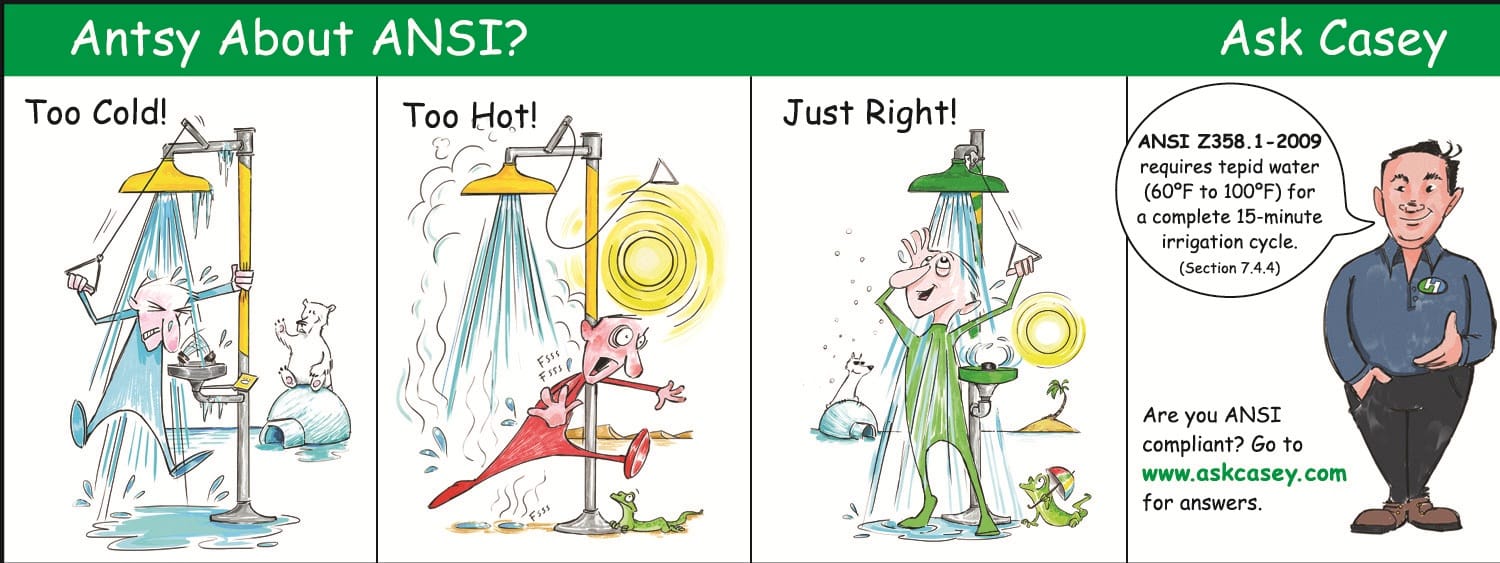
While the ANSI Z358.1 Standard outlines suitable water temperatures as tepid – with a defined range of 60 to 100°F/15.5 to 37.77°C – and requires a full 15-minute drench period, the low end of this accepted temperature range can exacerbate the effects of hypothermia, particularly when exposure lasts the entire drench period. In addition, ANSI Z358.1 Appendix B6 states: Colder ambient temperatures might require an enclosure for added protection – even with water supplied in the ANSI Z358.1 specified temperature range, there is a high risk of hypothermia for wet victims exposed to frigid ambient temperatures where loss of body heat is intensified by the effects of evaporative cooling and wind chill. It is crucial that the proper safety shower system is provided to prevent an incident where hypothermia could intensify an injury to a victim already in a hazardous situation.
